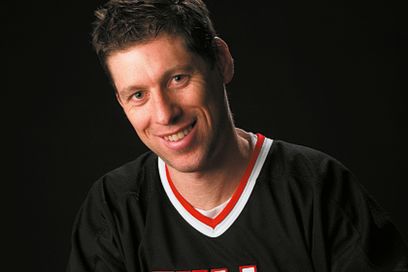
Perry Friedman
 You are in the big blind with Ts - 8s against a player who has limped pre-flop. The flop comes K-X-X with two Spades. What do you do?
You are in the big blind with Ts - 8s against a player who has limped pre-flop. The flop comes K-X-X with two Spades. What do you do?
You want to complete your flush, but you don't want to pay too much to complete. Instinctively, you say that checker is the best way to get a free card and you are right.
In fact, checker is the only way to get a free card, but it will not give you the opportunity to complete your hand. It will not maximize your winnings if you complete your hand.
Suppose that your opponent bets the pot. Now you have scores of 2-1 for caller and sides of 4-1 to complete your hand. You can not see the turn, you do not have the sides.
What happens if you take the lead by making a small bet? If you are a player who likes to slowplayer or against a player who loves to large bluffs, a small bet will be the best way to see the turn.
How small should be upgrading? Try to bet between 1/3 and 1/4 of the pot. If there's $300 in the pot and you bet $100, you now have the sides to complete your flush. If you bet $75, you now have more than the sides and it does not take into account the amount that your opponent will bet or caller on the turn and the river. If you complete your flush on the turn and your opponent is ready to caller one put of $400, you have implied odds of $300 (size of the pot on the flop) + $400 (presumed amount that your opponent is going to caller on the turn) = $700 for $100 (your bet on the flop), or 7-1.
What is a game even better is when your draw is less obvious. Suppose a flop of Q-9-6. Now you run the double gut shot straight, where a 7 or a J allows you to complete your hand. An 8 or a K would be a scary card, obviously, but a 7 appears to be a map that has helped nobody. (The J is a somewhat riskier card since that you won't go nuts straight, but a ¼ of the pot bet is good update to do).
In a tournament, such a strategy could be more risky and less profitable, especially in the early stages of a tournament. Since you're starting with a limited number of tokens, your side must be closer to 5-1 or even 6-1 before you can consider running cards otherwise you will find yourself quickly short stacked.
The important thing when you short cards is to be the aggressor. Lose the initiative in hand makes you vulnerable and you will quickly lose the sides to run your card, be it against a strong hand or a bluff. If you want to see another card and pay the right amount, the best thing to do is to be the one that.
 You are in the big blind with Ts - 8s against a player who has limped pre-flop. The flop comes K-X-X with two Spades. What do you do?
You are in the big blind with Ts - 8s against a player who has limped pre-flop. The flop comes K-X-X with two Spades. What do you do?You want to complete your flush, but you don't want to pay too much to complete. Instinctively, you say that checker is the best way to get a free card and you are right.
In fact, checker is the only way to get a free card, but it will not give you the opportunity to complete your hand. It will not maximize your winnings if you complete your hand.
Suppose that your opponent bets the pot. Now you have scores of 2-1 for caller and sides of 4-1 to complete your hand. You can not see the turn, you do not have the sides.
What happens if you take the lead by making a small bet? If you are a player who likes to slowplayer or against a player who loves to large bluffs, a small bet will be the best way to see the turn.
How small should be upgrading? Try to bet between 1/3 and 1/4 of the pot. If there's $300 in the pot and you bet $100, you now have the sides to complete your flush. If you bet $75, you now have more than the sides and it does not take into account the amount that your opponent will bet or caller on the turn and the river. If you complete your flush on the turn and your opponent is ready to caller one put of $400, you have implied odds of $300 (size of the pot on the flop) + $400 (presumed amount that your opponent is going to caller on the turn) = $700 for $100 (your bet on the flop), or 7-1.
What is a game even better is when your draw is less obvious. Suppose a flop of Q-9-6. Now you run the double gut shot straight, where a 7 or a J allows you to complete your hand. An 8 or a K would be a scary card, obviously, but a 7 appears to be a map that has helped nobody. (The J is a somewhat riskier card since that you won't go nuts straight, but a ¼ of the pot bet is good update to do).
In a tournament, such a strategy could be more risky and less profitable, especially in the early stages of a tournament. Since you're starting with a limited number of tokens, your side must be closer to 5-1 or even 6-1 before you can consider running cards otherwise you will find yourself quickly short stacked.
The important thing when you short cards is to be the aggressor. Lose the initiative in hand makes you vulnerable and you will quickly lose the sides to run your card, be it against a strong hand or a bluff. If you want to see another card and pay the right amount, the best thing to do is to be the one that.




